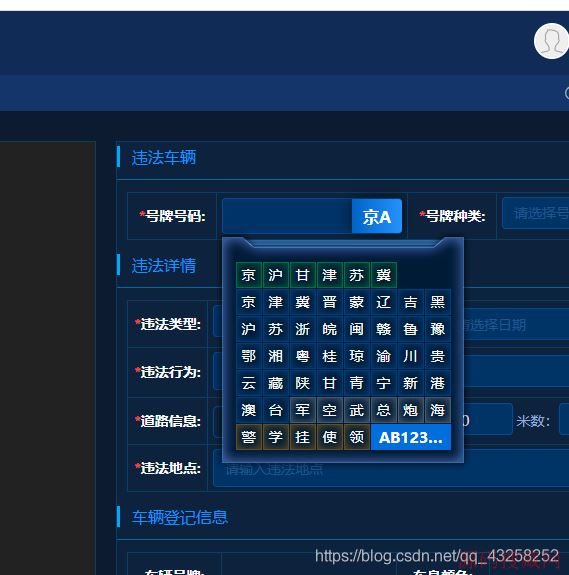vuex如何在非组件中调用mutations办法
在非组件中调用mutations方法
一般情况下调用 mutations.js 中的方法都是在组件中,如果想在非组件中调用,则需要使用如下方式
在组件中调用
1 2 3 4 5 6 7 8 9 10 11 12 | import {mapMutations} from 'vuex'import {SET_IS_LOGIN} from 'store/mutation-types'export default {? ? methods: {? ? ? ? ...mapMutations({? ? ? ? ? ? set_is_login: SET_IS_LOGIN? ? ? ? }),? ? ? ? init() {? ? ? ? ? ? this.set_is_login(true)? ? ? ? }? ? }} |
在非组件中调用
1 2 3 4 5 | import store from 'store'import {SET_IS_LOGIN} from 'store/mutation-types'function init() {? ? store.commit(SET_IS_LOGIN, true)} |
vuex的mutations属性
mutations属性介绍
是唯一一种方式来修改state中的状态的;在组件的自定义方法中,使用this.$store.commit(‘对应mutations中的方法’, 新的值)方法,把新的值提交给mutations中相对应的方法,mutations属性中的每个方法中有两个参数,分比为state和payload;state其实就是vuex中的state属性,payload叫做mutations的载荷,其实就是传过来的值。一般payload传的是一个对象,这样可以包含多个字段并且记录的 mutation 会更易读:
1 2 3 4 5 | mutations: {? increment (state, payload) {? ? state.count += payload.amount? }} |
1 2 3 | store.commit('increment', {? amount: 10}) |
对象风格的提交方式
提交 mutation 的另一种方式是直接使用包含 type 属性的对象:
1 2 3 4 | store.commit({? type: 'increment',? amount: 10}) |
当使用对象风格的提交方式,整个对象都作为载荷传给 mutation 函数,因此 handler 保持不变:
1 2 3 4 5 | mutations: {? increment (state, payload) {? ? state.count += payload.amount? }} |
使用常量替代 Mutation 事件类型
使用常量替代 mutation 事件类型在各种 Flux 实现中是很常见的模式。这样可以使 linter 之类的工具发挥作用,同时把这些常量放在单独的文件中可以让你的代码合作者对整个 app 包含的 mutation 一目了然:
1 2 | // mutation-types.jsexport const SOME_MUTATION = 'SOME_MUTATION' |
1 2 3 | // store.jsimport Vuex from 'vuex'import { SOME_MUTATION } from './mutation-types' |
1 2 3 4 5 6 7 8 9 | const store = new Vuex.Store({? state: { ... },? mutations: {? ? // 我们可以使用 ES2015 风格的计算属性命名功能来使用一个常量作为函数名? ? [SOME_MUTATION] (state) {? ? ? // mutate state? ? }? }}) |
用不用常量取决于你——在需要多人协作的大型项目中,这会很有帮助。但如果你不喜欢,你完全可以不这样做。
Mutation 必须是同步函数
一条重要的原则就是要记住 mutation 必须是同步函数。为什么?请参考下面的例子:
1 2 3 4 5 6 7 | mutations: {? someMutation (state) {? ? api.callAsyncMethod(() => {? ? ? state.count++? ? })? }} |
现在想象,我们正在 debug 一个 app 并且观察 devtool 中的 mutation 日志。每一条 mutation 被记录,devtools 都需要捕捉到前一状态和后一状态的快照。然而,在上面的例子中 mutation 中的异步函数中的回调让这不可能完成:因为当 mutation 触发的时候,回调函数还没有被调用,devtools 不知道什么时候回调函数实际上被调用——实质上任何在回调函数中进行的状态的改变都是不可追踪的。
在组件中提交 Mutation
你可以在组件中使用 this.$store.commit(‘xxx’) 提交 mutation,或者使用 mapMutations 辅助函数将组件中的 methods 映射为 store.commit 调用(需要在根节点注入 store)。
1 2 3 4 5 6 7 8 9 10 11 12 13 14 | import { mapMutations } from 'vuex'export default {? // ...? methods: {? ? ...mapMutations([? ? ? 'increment', // 将 `this.increment()` 映射为 `this.$store.commit('increment')`? ? ? // `mapMutations` 也支持载荷:? ? ? 'incrementBy' // 将 `this.incrementBy(amount)` 映射为 `this.$store.commit('incrementBy', amount)`? ? ]),? ? ...mapMutations({? ? ? add: 'increment' // 将 `this.add()` 映射为 `this.$store.commit('increment')`? ? })? }} |
以上为个人经验,希望能给大家一个参考,也希望大家多多支持源码搜藏网。
【JQ】无限滚动条-jquery.infinitescroll.j
query多选下拉框插件 jquery-multiselect(
手机站jQuery自动完成插件autoComplete.js
热门源码






